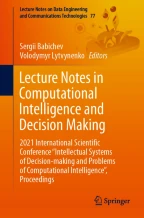Abstract
In this paper, we proposed a new measure to solve the full reference image quality assessment problem. The core of the approach is known as peak signal-to-noise ratio improved with the estimation of local block-wise distortions, contrast, and saturation differences between test and referenced images. A measure that includes these values into a common quality score has been proposed. The proposed measure includes factors and thresholds which allow tuning the measure according to the specific features of the particular image dataset. The iterative numerical partial optimization algorithm for the fine-tuning of these factors and thresholds has been proposed, implemented, and tested as well as start optimization point selection has been described. The dependency of quality measure on parameters fine-tuning has been investigated. The usage of the proposed quality metric for the processing of TID2013 and CSIQ datasets as well as its computational complexity has been investigated. The results of modeling have been shown that it is possible to build the image quality measure in a fraction of a second preserving the average comparison quality in terms of the mean opinion score provided by humans.
Access this chapter
Tax calculation will be finalised at checkout
Purchases are for personal use only
Similar content being viewed by others
References
CSIQ image quality database. http://vision.eng.shizuoka.ac.jp/mod/page/view.php?id=23
Tampere image database 2013 TID2013, version 1.0. http://www.ponomarenko.info/tid2013.htm
Ding, K., Ma, K., Wang, S., Simoncelli, E.P.: Comparison of full-reference image quality models for optimization of image processing systems. Int. J. Comput. Vis. 129, 1–24 (2021)
Kamble, V., Bhurchandi, K.: No-reference image quality assessment algorithms: a survey. Optik 126(11), 1090–1097 (2015). https://doi.org/10.1016/j.ijleo.2015.02.093. https://www.sciencedirect.com/science/article/pii/S003040261500145X
Larson, E.C., Chandler, D.M.: Most apparent distortion: full-reference image quality assessment and the role of strategy. J. Electron. Imaging 19(1), 1–21 (2010). https://doi.org/10.1117/1.3267105
Liu, T., Liu, K., Lin, J.Y., Lin, W., Kuo, C.J.: A paraboost method to image quality assessment. IEEE Trans. Neural Netw. Learn. Syst. 28(1), 107–121 (2017). https://doi.org/10.1109/TNNLS.2015.2500268
Liu, X., Van De Weijer, J., Bagdanov, A.D.: RankIQA: learning from rankings for no-reference image quality assessment. In: 2017 IEEE International Conference on Computer Vision (ICCV), pp. 1040–1049 (2017). https://doi.org/10.1109/ICCV.2017.118
Madeed, N.A., Awan, Z., Madeed, S.A.: Image quality assessment - a survey of recent approaches. In: Computer Science and Information Technology (2018)
Pedersen, M., Hardeberg, J.Y.: Full-reference image quality metrics: classification and evaluation. Found. Trends® Comput. Graph. Vis. 7(1), 1–80 (2012). https://doi.org/10.1561/0600000037
Peng, P., Li, Z.N.: General-purpose image quality assessment based on distortion-aware decision fusion. Neurocomputing 134, 117–121 (2014). https://doi.org/10.1016/j.neucom.2013.08.046
Ponomarenko, N., et al.: Image database TID2013: peculiarities, results and perspectives. Signal Process.: Image Commun. 30, 57–77 (2015). https://doi.org/10.1016/j.image.2014.10.009. http://www.sciencedirect.com/science/article/pii/S0923596514001490
Saha, A., Wu, Q.J.: Full-reference image quality assessment by combining global and local distortion measures. Signal Process. 128, 186–197 (2016). https://doi.org/10.1016/j.sigpro.2016.03.026
Sharma, A.: Principal component analysis (PCA) in Python (2020). https://www.datacamp.com/community/tutorials/principal-component-analysis-in-python
Sheikh, H.R., Bovik, A.C.: Image information and visual quality. IEEE Trans. Image Process. 15(2), 430–444 (2006). https://doi.org/10.1109/TIP.2005.859378
Wang, Z., Bovik, A.: Modern image quality assessment. In: Modern Image Quality Assessment (2006)
Wang, Z., Bovik, A.C., Lu, L.: Why is image quality assessment so difficult? In: 2002 IEEE International Conference on Acoustics, Speech, and Signal Processing, vol. 4, pp. IV-3313–IV-3316 (2002). https://doi.org/10.1109/ICASSP.2002.5745362
Wang, Z., Simoncelli, E.P., Bovik, A.C.: Multiscale structural similarity for image quality assessment. In: The Thrity-Seventh Asilomar Conference on Signals, Systems Computers, vol. 2, pp. 1398–1402 (2003). https://doi.org/10.1109/ACSSC.2003.1292216
Zhai, G., Min, X.: Perceptual image quality assessment: a survey. Sci. China Inf. Sci. 63, 1–52 (2020)
Zhan, Y., Zhang, R., Wu, Q.: A structural variation classification model for image quality assessment. IEEE Trans. Multimedia 19(8), 1837–1847 (2017). https://doi.org/10.1109/TMM.2017.2689923
Zhang, L., Zhang, L., Mou, X., Zhang, D.: FSIM: a feature similarity index for image quality assessment. IEEE Trans. Image Process. 20(8), 2378–2386 (2011). https://doi.org/10.1109/TIP.2011.2109730
Zhang, M., Mou, X., Zhang, L.: Non-shift edge based ratio (NSER): an image quality assessment metric based on early vision features. IEEE Signal Process. Lett. 18(5), 315–318 (2011). https://doi.org/10.1109/LSP.2011.2127473
Wang, Z., Bovik, A.C., Sheikh, H.R., Simoncelli, E.P.: Image quality assessment: from error visibility to structural similarity. IEEE Trans. Image Process. 13(4), 600–612 (2004). https://doi.org/10.1109/TIP.2003.819861
Author information
Authors and Affiliations
Editor information
Editors and Affiliations
Rights and permissions
Copyright information
© 2022 The Author(s), under exclusive license to Springer Nature Switzerland AG
About this paper
Cite this paper
Gorokhovatskyi, O., Peredrii, O. (2022). Fine-Tuning of the Measure for Full Reference Image Quality Assessment. In: Babichev, S., Lytvynenko, V. (eds) Lecture Notes in Computational Intelligence and Decision Making. ISDMCI 2021. Lecture Notes on Data Engineering and Communications Technologies, vol 77. Springer, Cham. https://doi.org/10.1007/978-3-030-82014-5_29
Download citation
DOI: https://doi.org/10.1007/978-3-030-82014-5_29
Published:
Publisher Name: Springer, Cham
Print ISBN: 978-3-030-82013-8
Online ISBN: 978-3-030-82014-5
eBook Packages: Intelligent Technologies and RoboticsIntelligent Technologies and Robotics (R0)
